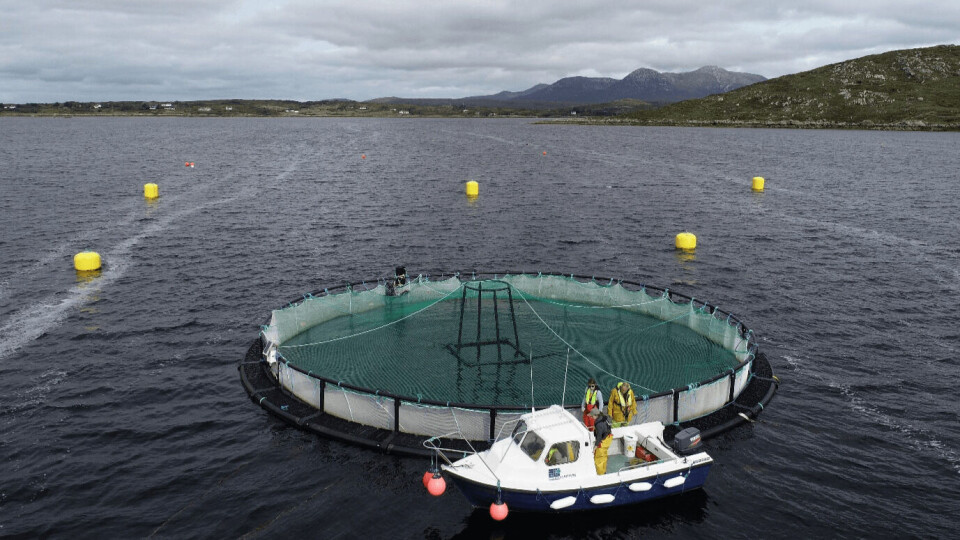
Irish fish farmers praised for respect for the rules
The aquaculture branch of the Irish Farmers’ Association (IFA Aquaculture) has welcomed a report that fish and shellfish growers have shown a “high level of compliance” to EU and national rules over the past two years.
The report by the Marine Institute summarises the activities undertaken by the Fish Health Unit (FHU) of the Marine Institute (MI) in 2018 and 2019.
Ireland continues to maintain its high health status for aquatic animals, with 98% of the 384 aquaculture sites inspected having “no compliance issues” or compliance issues considered “minor”.

‘Great credit’
IFA Aquaculture chairman Michael Mulloy said: “Aquatic animal health regulations apply to all Irish aquaculture operators, finfish farms, shellfish farms and put and take fisheries (stocked angling ponds).
“The regulation requires these businesses to obtain a Fish Health Authorisation from the Marine Institute. It’s of great credit to Irish aquaculture producers that there is such a high level of compliance with these obligations acknowledged by the competent authority.”
The report’s section on salmon farming activities reveals that 57 sites held a fish health authorisation during 2018 and 2019, 47 of which were operational in 2018. This included 22 freshwater / hatchery sites and 25 marine farm sites. Fifty-three sites were operational in 2019, 23 being freshwater / hatchery sites and 30 marine farm sites.
Minor non-compliances
All operational sites were inspected in 2018 and 51 sites were inspected in 2019. Minor non-compliances, primarily associated with failure to keep fully completed records, were observed during 25 of inspections undertaken during the two-year period.
These included:
- Sites where records of fish movements etc. were maintained but were not readily available onsite on the day of inspection. At all of these sites, records were supplied subsequently to the day of inspection;
- instances where wellboat arrival logs were not maintained on site but were subsequently made available;
- records of disinfectant usage not fully maintained;
- changes to the type of disinfectant used not recorded.
There were no “medium” or “serious” breaches.
CMS
Ireland is declared free from all EU-listed notifiable salmonid diseases, and during 2018 and 2019 continued to implement a targeted surveillance programme to demonstrate disease freedom for a number of pathogens affecting, or potentially affecting, salmon.
In 2018 the Marine Institute received 41 weekly reports of increased mortalities from salmon marine sites, triggered if mortalities are above 1% for fish above 750g and above 1.5% for fish under 750g.
These included two mortality events in which cardiomyopathy syndrome (CMS) caused by piscine myocarditis virus (PMCV) was confirmed.
Piscirickettsiosis
Principle infections associated with the mortality events were amoebic gill disease (AGD) caused by Neoparamoeba perurans, pancreas disease (PD) caused by salmon alphavirus, CMS and one event involving an outbreak of piscirickettsiosis, also known as SRS, caused by the bacterium Piscirickettsia salmonis.
Mortality was often associated with multifactorial causes and included non-infectious causes such as phytoplankton blooms and jellyfish. The peak weekly mortality recorded at any site in 2018 was 11.55%. This occurred during the longest running event at any site, which lasted for ten weeks between June and August and was caused by multiple factors including AGD, PD and jellyfish.
Overall, for the 41 weekly mortality reports the mean weekly percentage mortality rate was 3.53% ranging from 1.2% to 11.55% for any given week.
Gill disorders
In 2019, 66 weekly reports of mortality were received, representing 20 distinct mortality events ranging from 1 – 10 weeks in duration. These occurred in ten separate sites.
The peak weekly mortality rate of 13.1% occurred during a five-week event in July and August. This mortality event was primarily associated with gill disorders along with smolts that did not feed properly, causing progressive weight loss and poor condition.
In February 2019 approximately 60,000 of 208,000 juvenile salmon died during wellboat transfer to a marine farm. An inspection of the fish found the cause of mortality was inconclusive, but the Marine Institute said the extent of mortality was likely exacerbated by a prolonged transit time due to bad weather preventing unloading of the fish at the destination site.






















































